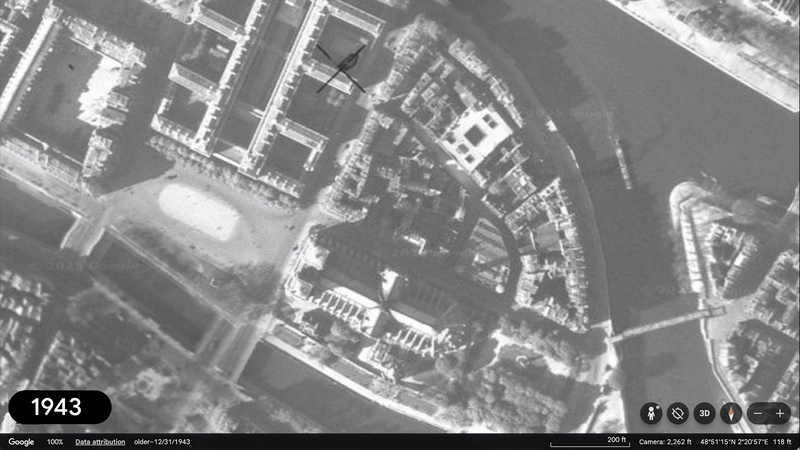- Google Earth is celebrating is 20th birthday this month
- It’s just added a new historical Street View feature for time-traveling
- Pro users will also get AI-powered upgrades to help with urban planning
Google Earth has just turned 20 years old and the digital globe has picked up a feature that could prove to be an addictive time-sink – historical Street View.
Yes, we’ve been able to time-travel around our cities and previous homes for years now on Google Maps, but Google Earth feels like a natural home for the feature, given its more immersive 3D views and satellite imagery. And from today, Google Earth now offers Street View with that historical menu bar.
That means you can visit famous buildings and landmarks (like the Vessel building in New York City below) and effectively watch their construction unfold. To do that, find a location in Google Earth, drag the pegman icon (bottom right) onto the street, click ‘see more dates’, and use the film strip menu to choose the year.
Around major cities and landmarks, Street View images are updated so regularly now that their snapshots are often only months apart, but in most areas they’re renewed every one to two years. That opens up some major nostalgia potential, particularly if the shots happen to have frozen someone you know in time.
Bringing history to life

To celebrate Earth’s birthday, Google has also made timelapses of its favorite historical aerial views, which stitch together satellite photos over several decades. This feature became available in the web and mobile versions of Earth last year – to find it, go the the layers icon and turn on the ‘historical imagery’ toggle.
One fascinating example is the aerial view of the Notre-Dame de Paris cathedral (above), which Google made exclusively for us. It shows the gothic icon from 1943 through to its unfortunate fire in 2019, followed by its recent reconstruction.
But other examples that Google has picked out include a view of Berlin, from its post-war devastation to the Berlin Wall and its modern incarnation, plus the stunning growth of Las Vegas and San Francisco over the decades.
There’s a high chance that Google Earth will, once again, send me down a hours-long rabbit hole with these Street View and historical imagery tricks. But it’s also giving Pro users some new AI-driven features in “the coming weeks”, with features like ‘tree canopy coverage’ and heatmaps showing land surface temperatures underlining Earth’s potential for urban planning.
That perhaps hints at the Gemini-powered treats to come for us non-professional users in the future. But for now, I have more than enough Earth-related treasure hunts to keep me occupied.













Leave a comment